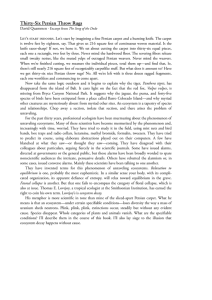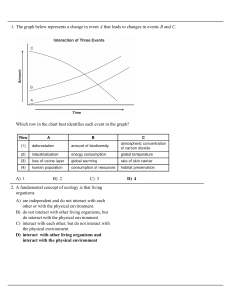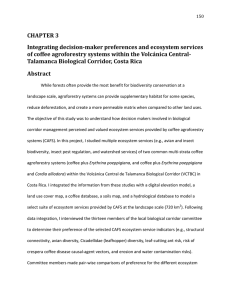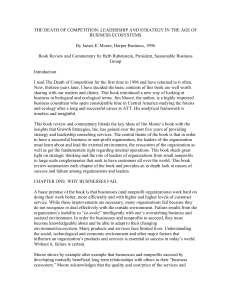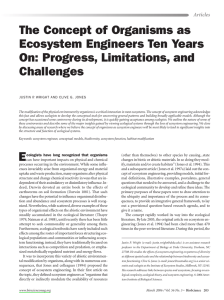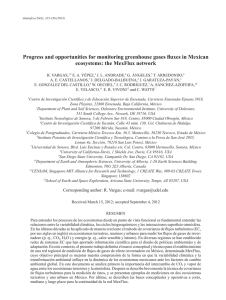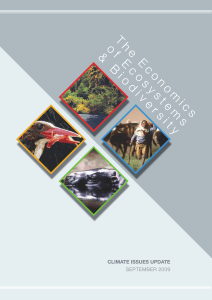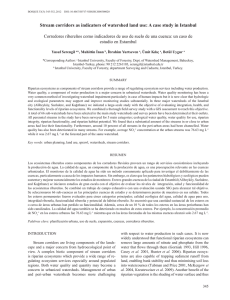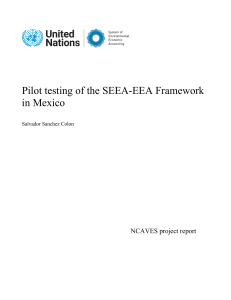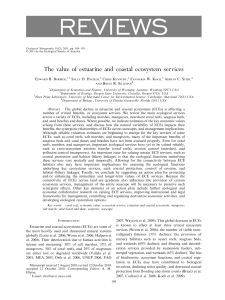Tecnológico de Monterrey, Campus Santa Fe. Biology Tropical Deciduous Forest
Anuncio
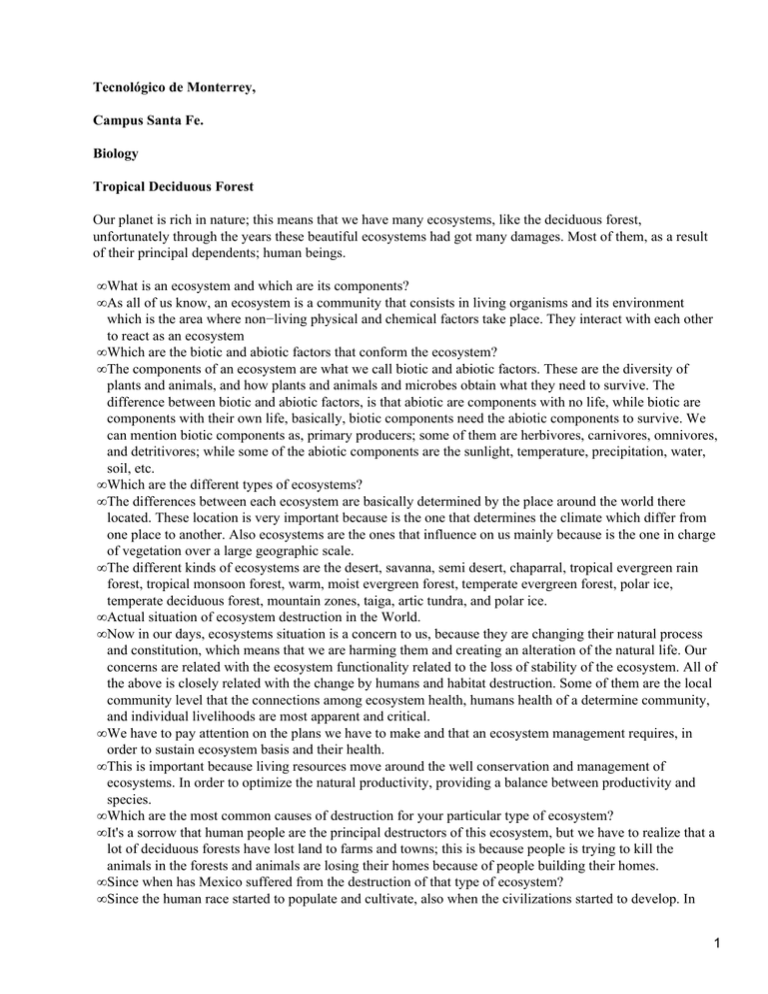
Tecnológico de Monterrey, Campus Santa Fe. Biology Tropical Deciduous Forest Our planet is rich in nature; this means that we have many ecosystems, like the deciduous forest, unfortunately through the years these beautiful ecosystems had got many damages. Most of them, as a result of their principal dependents; human beings. • What is an ecosystem and which are its components? • As all of us know, an ecosystem is a community that consists in living organisms and its environment which is the area where non−living physical and chemical factors take place. They interact with each other to react as an ecosystem • Which are the biotic and abiotic factors that conform the ecosystem? • The components of an ecosystem are what we call biotic and abiotic factors. These are the diversity of plants and animals, and how plants and animals and microbes obtain what they need to survive. The difference between biotic and abiotic factors, is that abiotic are components with no life, while biotic are components with their own life, basically, biotic components need the abiotic components to survive. We can mention biotic components as, primary producers; some of them are herbivores, carnivores, omnivores, and detritivores; while some of the abiotic components are the sunlight, temperature, precipitation, water, soil, etc. • Which are the different types of ecosystems? • The differences between each ecosystem are basically determined by the place around the world there located. These location is very important because is the one that determines the climate which differ from one place to another. Also ecosystems are the ones that influence on us mainly because is the one in charge of vegetation over a large geographic scale. • The different kinds of ecosystems are the desert, savanna, semi desert, chaparral, tropical evergreen rain forest, tropical monsoon forest, warm, moist evergreen forest, temperate evergreen forest, polar ice, temperate deciduous forest, mountain zones, taiga, artic tundra, and polar ice. • Actual situation of ecosystem destruction in the World. • Now in our days, ecosystems situation is a concern to us, because they are changing their natural process and constitution, which means that we are harming them and creating an alteration of the natural life. Our concerns are related with the ecosystem functionality related to the loss of stability of the ecosystem. All of the above is closely related with the change by humans and habitat destruction. Some of them are the local community level that the connections among ecosystem health, humans health of a determine community, and individual livelihoods are most apparent and critical. • We have to pay attention on the plans we have to make and that an ecosystem management requires, in order to sustain ecosystem basis and their health. • This is important because living resources move around the well conservation and management of ecosystems. In order to optimize the natural productivity, providing a balance between productivity and species. • Which are the most common causes of destruction for your particular type of ecosystem? • It's a sorrow that human people are the principal destructors of this ecosystem, but we have to realize that a lot of deciduous forests have lost land to farms and towns; this is because people is trying to kill the animals in the forests and animals are losing their homes because of people building their homes. • Since when has Mexico suffered from the destruction of that type of ecosystem? • Since the human race started to populate and cultivate, also when the civilizations started to develop. In 1 Mexico in the 40's, was the decade where was lost a huge extension of these forest, all because of an agriculture project. • Which factors (dependent and non−dependent) destroy it the most? • This ecosystem has suffered many damages and its destruction had increased. All this destruction it's because of the human beings; we damage this ecosystem by agriculture because these areas had been converted into artificial grasslands to satisfied people's needs. Also the development of a town or city affects the plants and animals of the ecosystem. All these consequences depend on us. • Why is it necessary that people take notice of the importance of preserving in good shape ecosystems? • It's important that people notice all the damage that we are causing, not just to this forest in this country, to all types of ecosystem of all around the world. If we don't care our nature, all our resources are going to finish. It's up to us to care this world. • Which are the plan and animal species that have been affected the most in Mexico because of the destruction of the ecosystem to which you were assigned? • The most important species are the plants; trees of 15 mtrs of high and grasses. The vegetation gets confused with grasslands and with other type of forests. • Which are the team's proposals to decrease the impact in that ecosystem? • This ecosystem is where the most of the cities are established. The best thing we can do to preserve the few areas of the forest, it's to care the vegetation that surrounds our homes, care the public parks, and care the green areas of our town or city, and most of all trying not to throw trash or pollute the air. As we've seen ecosystems are compose by abiotic and biotic components, which are important for any ecosystem. Ecosystems also include energy transformations such as the temperature and biogeochemical cycling. Nutrients are recycled within an ecosystem, and it normally supply the biological activities limit. The first component is the energy because with out it the photosynthesis process can't be completed. And it determines the amount of tropic levels. In some words, a biome is a major vegetation type extending over a large area, determined by temperature and precipitation patterns on the Earth's surface. In our specific case, the deciduous forest is the one where human beings usually construct, so as a result, this forest is the one more affected by us. We have to take care of our environment. Remember we don't have other place to go. Preserve it. BIBLIOGRAPHY: • www.doe.mass.edu/frameworks/scitech/2001/resources/glossary.html • www.for.gov.bc.ca/hfd/library/documents/glossary/E.htm • http://www.globalchange.umich.edu/globalchange1/current/lectures/kling/ecosystem/ecosystem.html • http://www.oceansatlas.org • *Romero Cuevas, Beatriz Eugenia. Ecosistemas de Mexico. http://www.union.org.mx/guia/tesorosdelplaneta/ecosistemas.html 2
